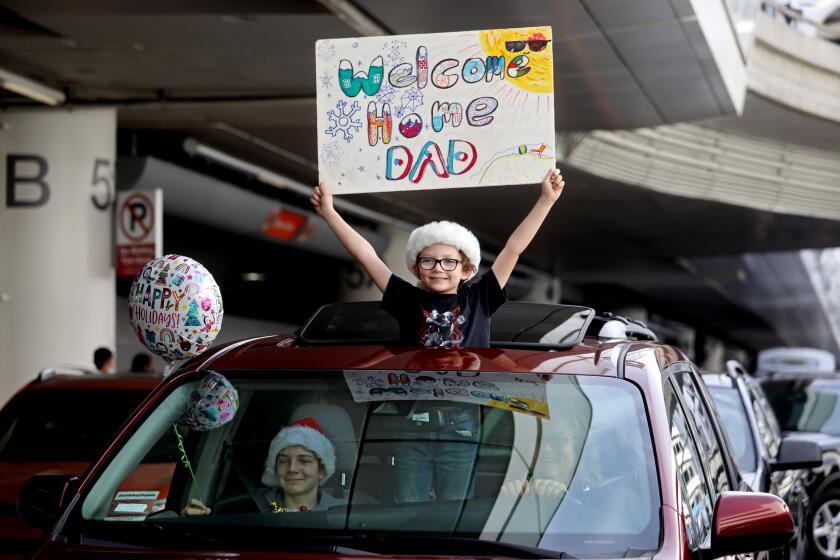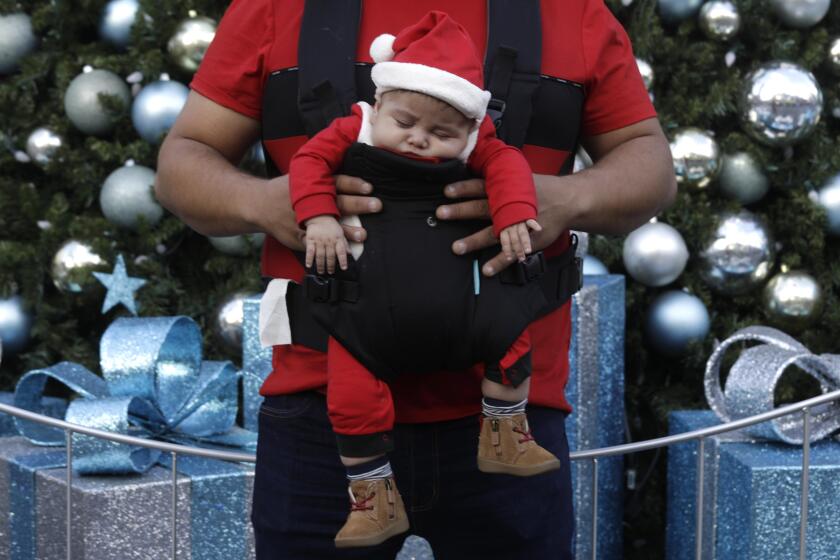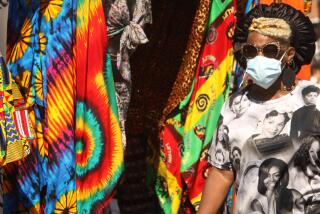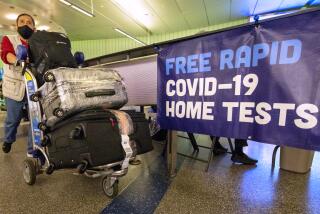New coronavirus cases soar to nearly 10,000 in L.A. County amid Omicron surge
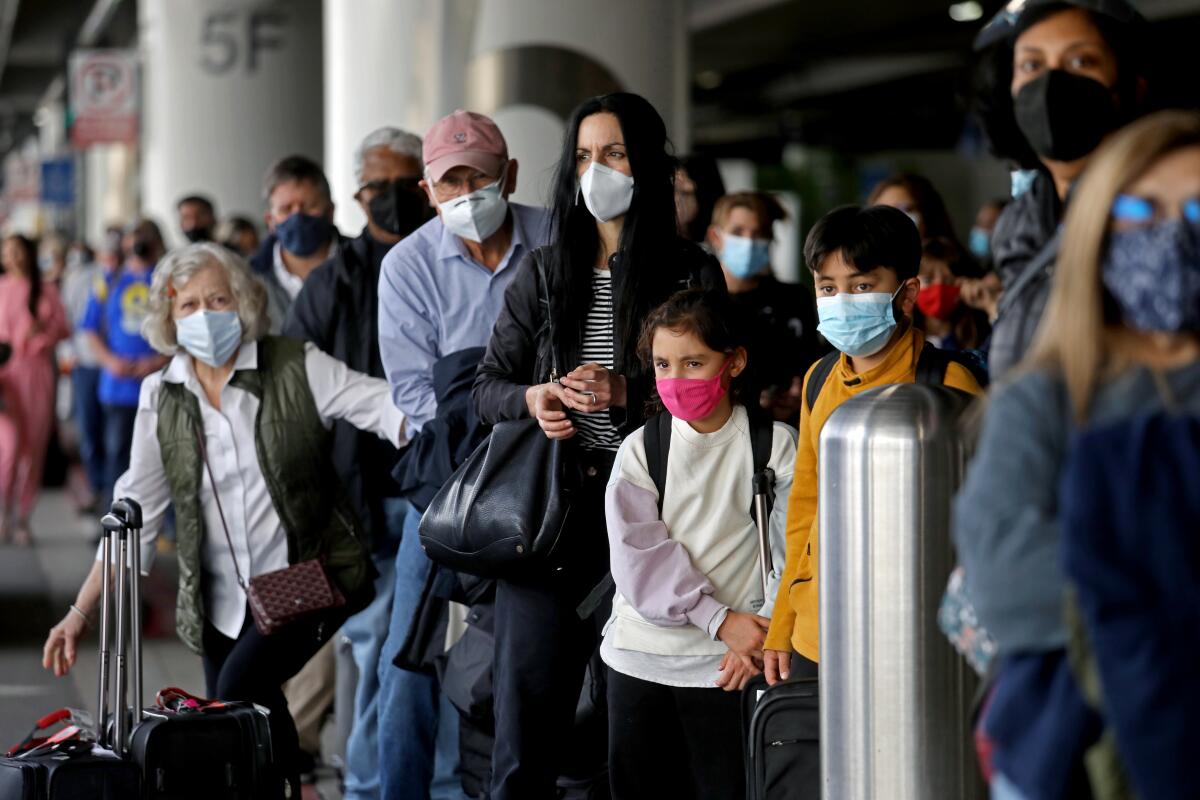
- Share via
Los Angeles County reported nearly 10,000 new coronavirus cases Friday as the highly infectious Omicron variant spread across California and officials took precautions.
The county reported 9,988 new cases, compared with 8,633 on Thursday and 6,509 on Wednesday. Cases have been rising dramatically this week — on Tuesday, the county was recording only 3,052 cases. Officials also said the seven-day COVID-19 positivity rate in L.A. County stands at 9.6%, up from 4.6% on Tuesday.
With cases soaring, L.A. County health officials announced Friday that they are expanding COVID-19 testing services, including the relaunch of an at-home test collection program. County health officials said that demand for testing has climbed as residents prepare for holiday celebrations.
“L.A. County residents are doing right by getting tested as a precaution before gathering, if they have been exposed and at the first sign of symptoms,” Dr. Christina Ghaly, director of L.A. County’s Department of Health Services, said in a news release. “We will continue to closely monitor testing needs and adjust capacity as needed in the coming weeks.”
The expanded testing, effective Friday, includes extended operating hours at sites across the county, “additional week and weekend dates,” as well as more mobile testing units dispatched to “hard-hit areas,” according to the news release.
The county health department is also relaunching a holiday at-home test collection program whereby residents can request a nasal test swab kit and have it delivered by FedEx within two days.
Up to 3.5 million people are expected to travel through LAX from Dec. 16-Jan. 3, airport officials said, making it the busiest travel period this year.
According to data released Thursday by the California Department of Public Health, at least three state health systems have reported that Omicron appears to account for 50% to 70% of new cases.
Officials said they hope to avoid new lockdown rules and believe the best chance of controlling Omicron is with vaccinations and booster shots, as well as safety protocols such as indoor mask wearing.
USC announced Friday that classes will take place remotely for the first week of the next term, and students and staff will also be required to show proof of COVID-19 booster shots as soon as they are eligible. The announcement comes a week after university officials said they were considering a remote start when classes begin Jan. 10.
Earlier this week, seven of the nine University of California undergraduate campuses announced they would begin the next term remotely after UC President Michael V. Drake asked chancellors for each site to implement plans for a safe return amid a serious spread of the Omicron variant.
USC will keep residence halls open on Jan. 6, but all students will need to test negative for COVID-19 before moving into campus housing and before in-person instruction resumes. The university said it will announce deadlines next week for requiring COVID-19 boosters for students, faculty and staff.
Rain gave way to mostly sunny skies in the L.A. area early Friday. A roundup of photos shows shoppers, beachgoers and even the vice president around town.
UC campuses are required to mandate booster shots, although it is up to each site to implement the mandate. California State University also issued a booster mandate for students.
California measures include a statewide mask mandate for indoor public spaces and a requirement for workers in healthcare and high-risk congregate settings to get a booster vaccine dose, as well as plans to provide rapid tests for students in K-12 public schools and expand hours at busy screening sites.
And the surge isn’t just in L.A. In San Francisco, public health officials said the local case rate has tripled, which they called “a clear indication that we have entered the fifth surge in the pandemic.”
Early data from England, Scotland, Denmark and South Africa suggest that an Omicron infection resulted in a 40% to 70% reduced need for hospitalization compared with the Delta variant.
There’s also no evidence that people who are vaccinated and have received a booster shot are getting severely ill with Omicron, unless they have a significantly weakened immune system.
Omicron’s ultra-contagious nature means an extraordinarily high number of people could get infected in a short time. And even if a lower percentage needs hospital care, a high number of infections happening at once could strain hospital systems, particularly in areas where vaccination rates are low.
More to Read
Sign up for Essential California
The most important California stories and recommendations in your inbox every morning.
You may occasionally receive promotional content from the Los Angeles Times.
